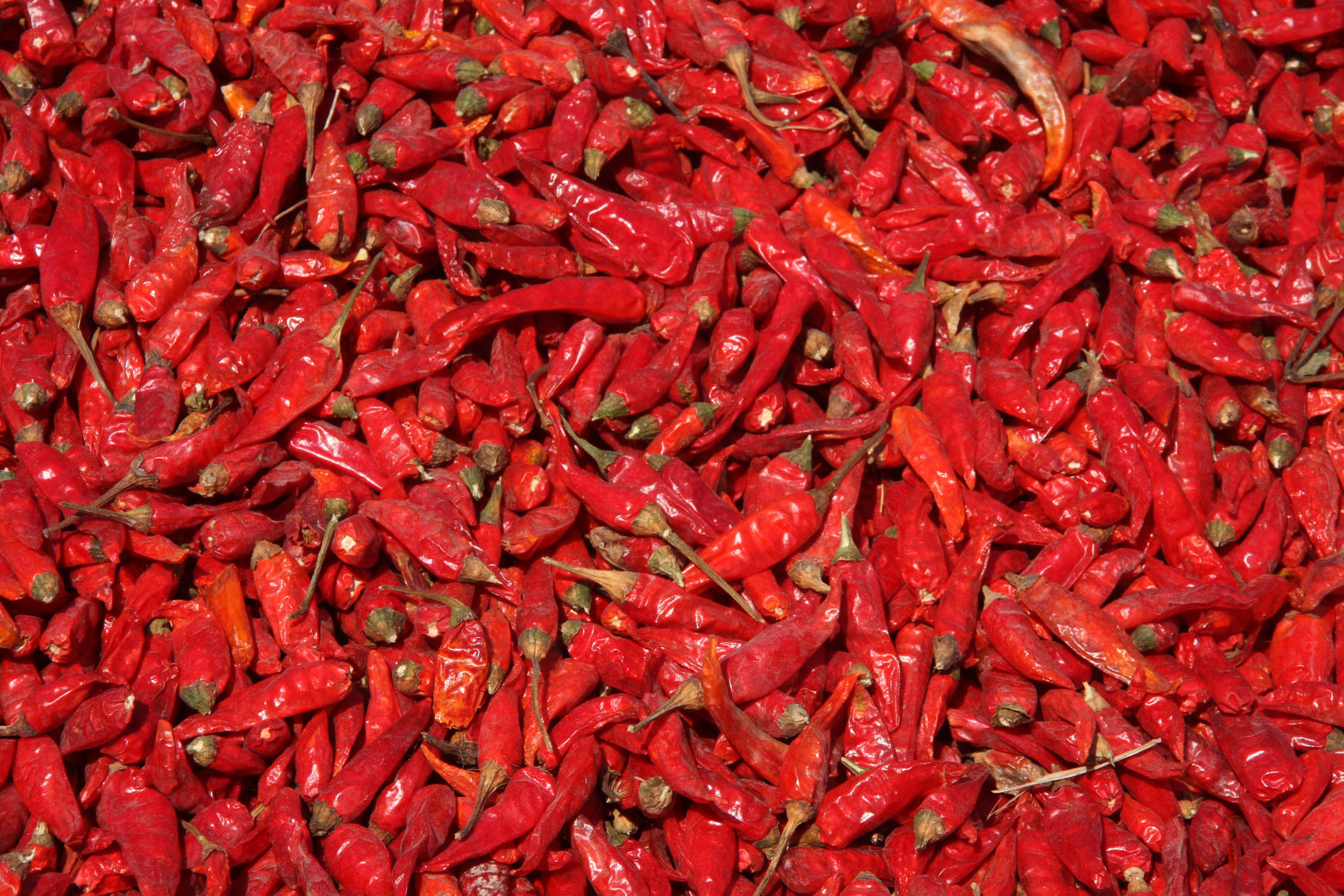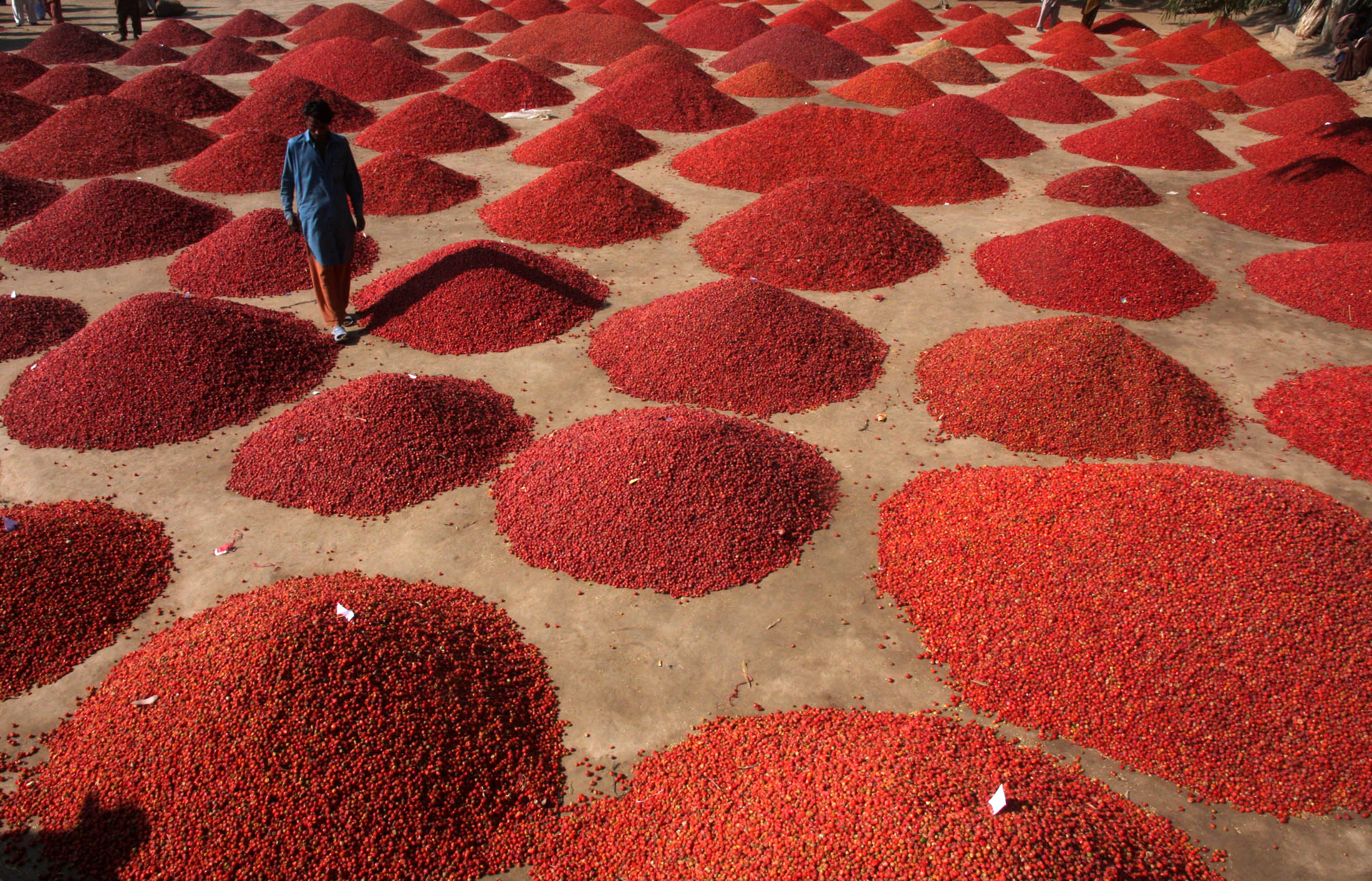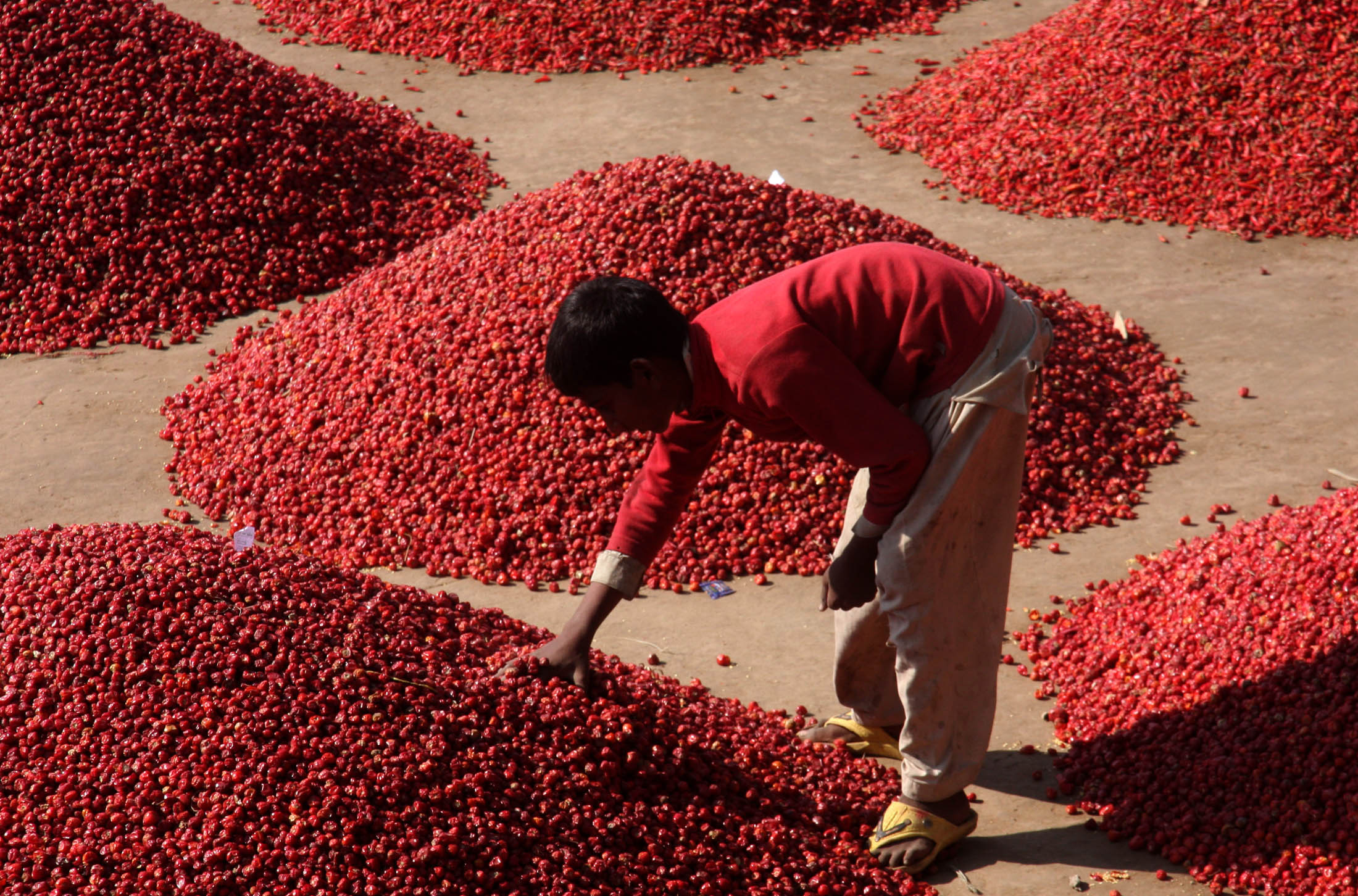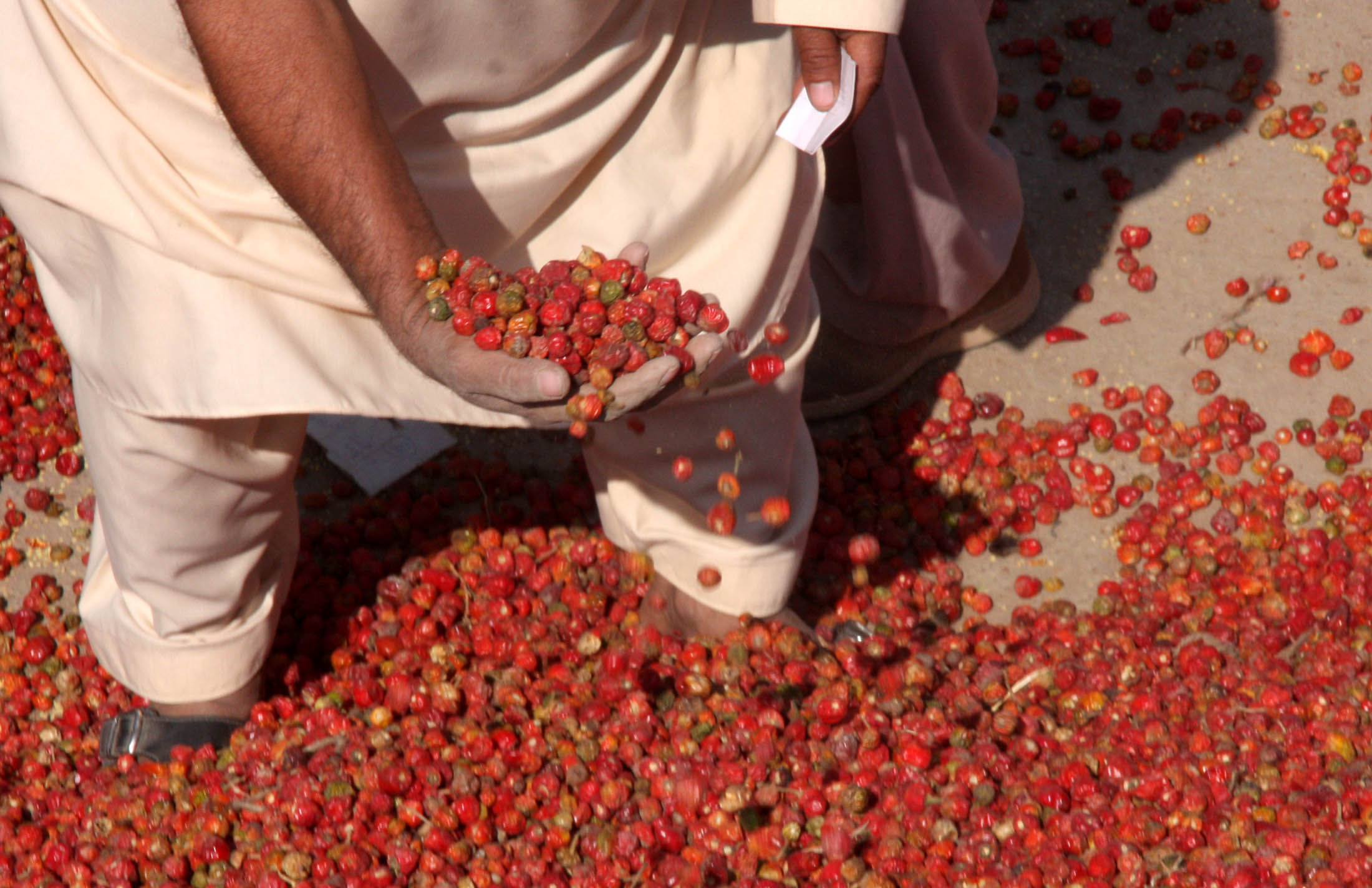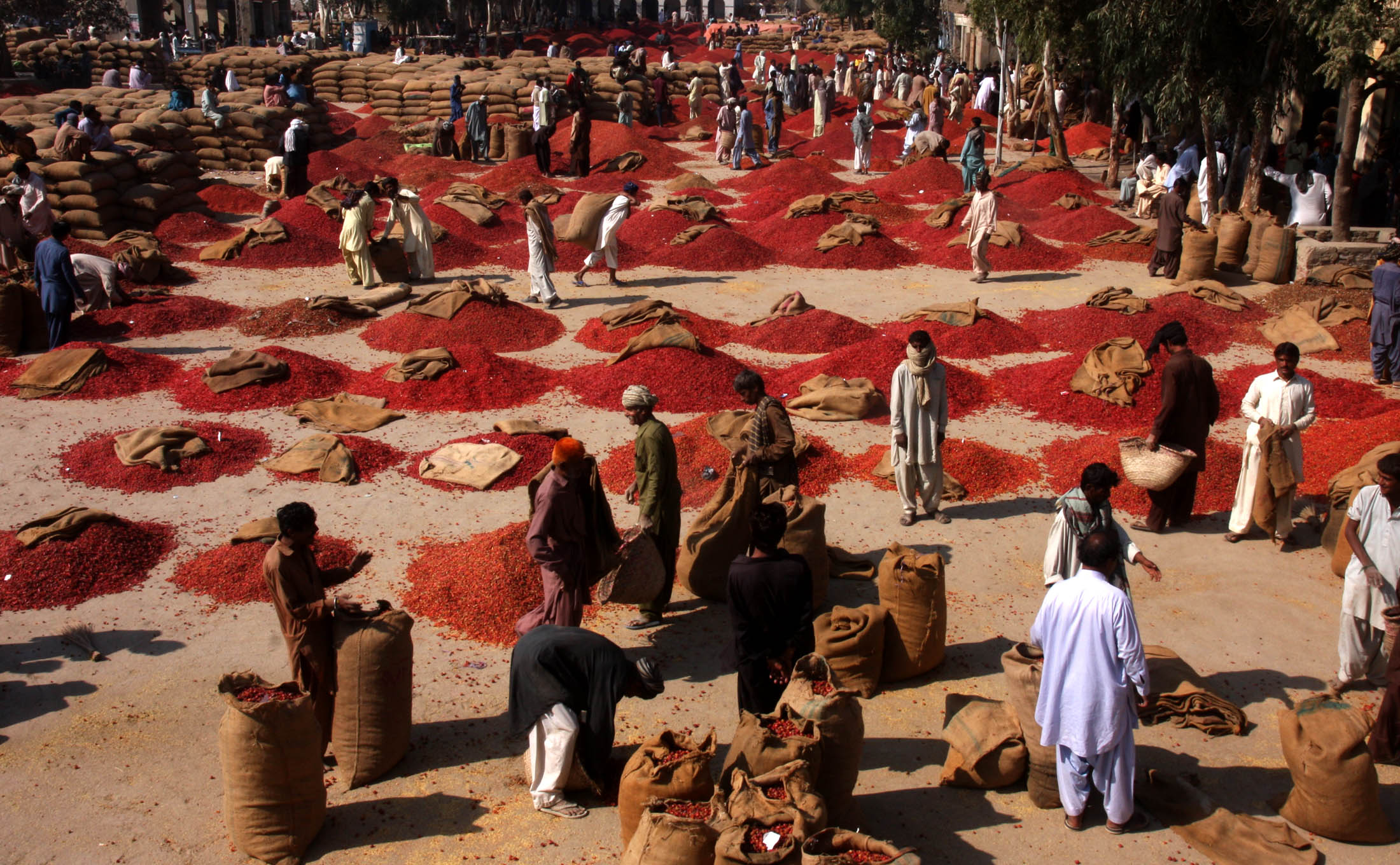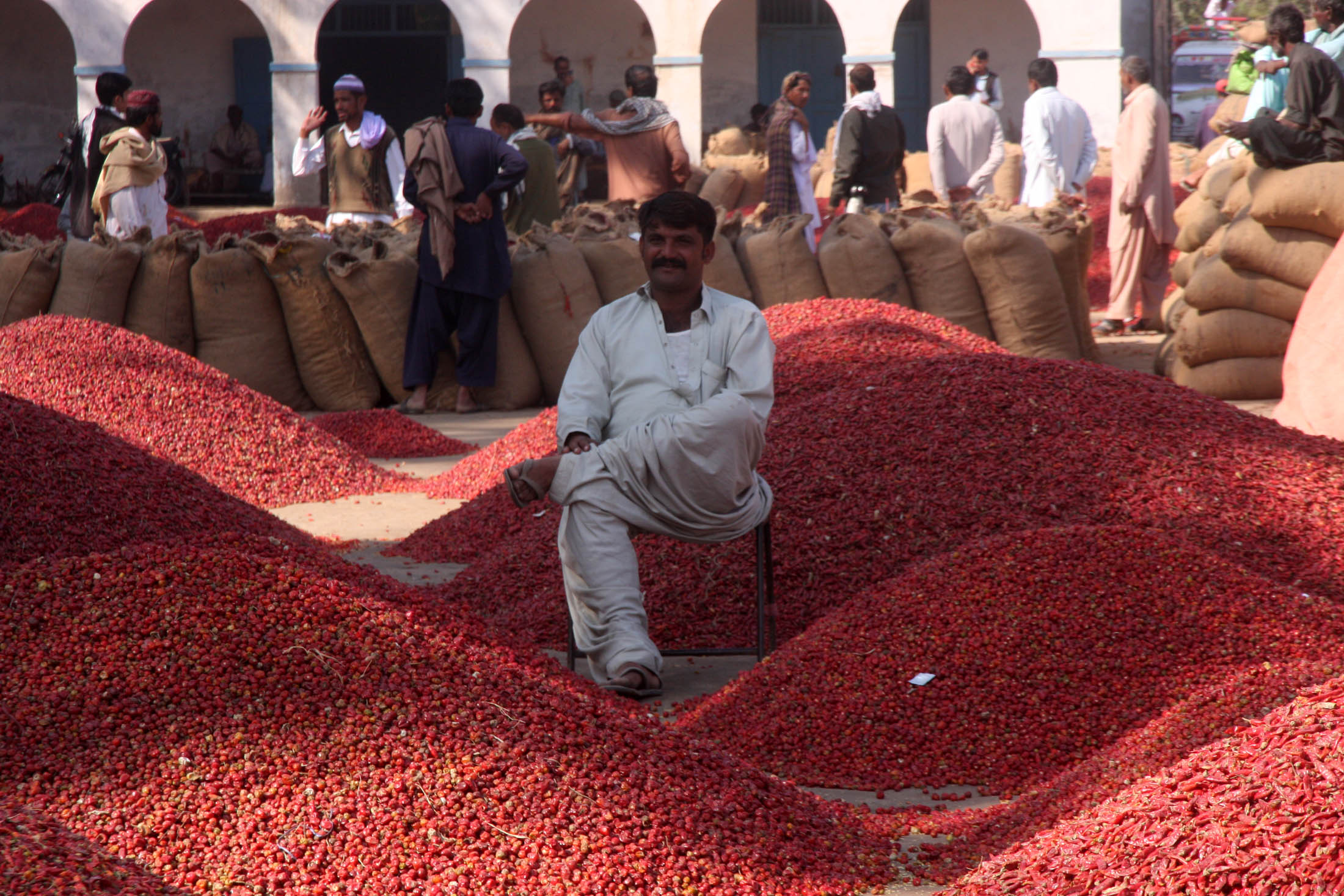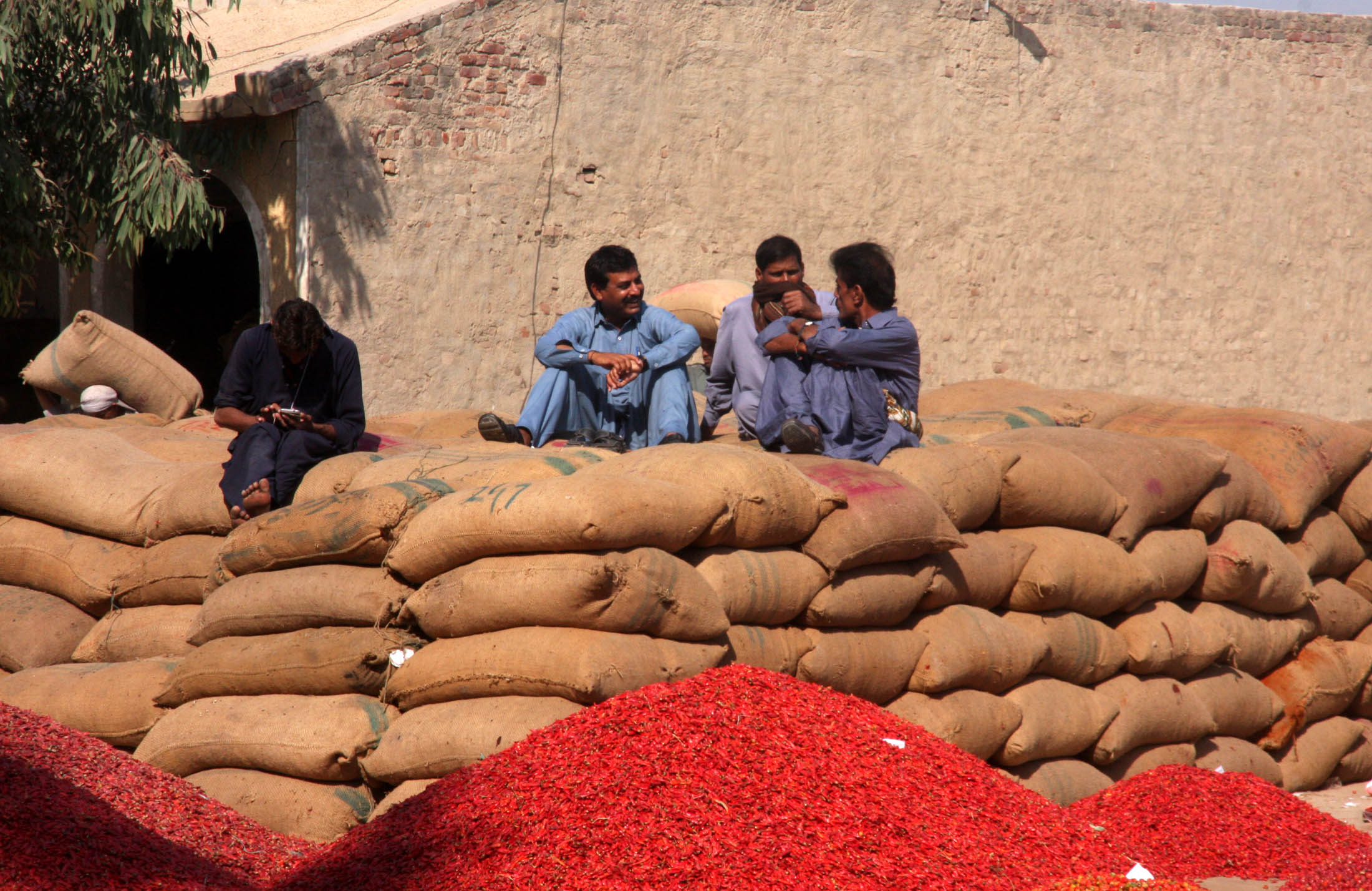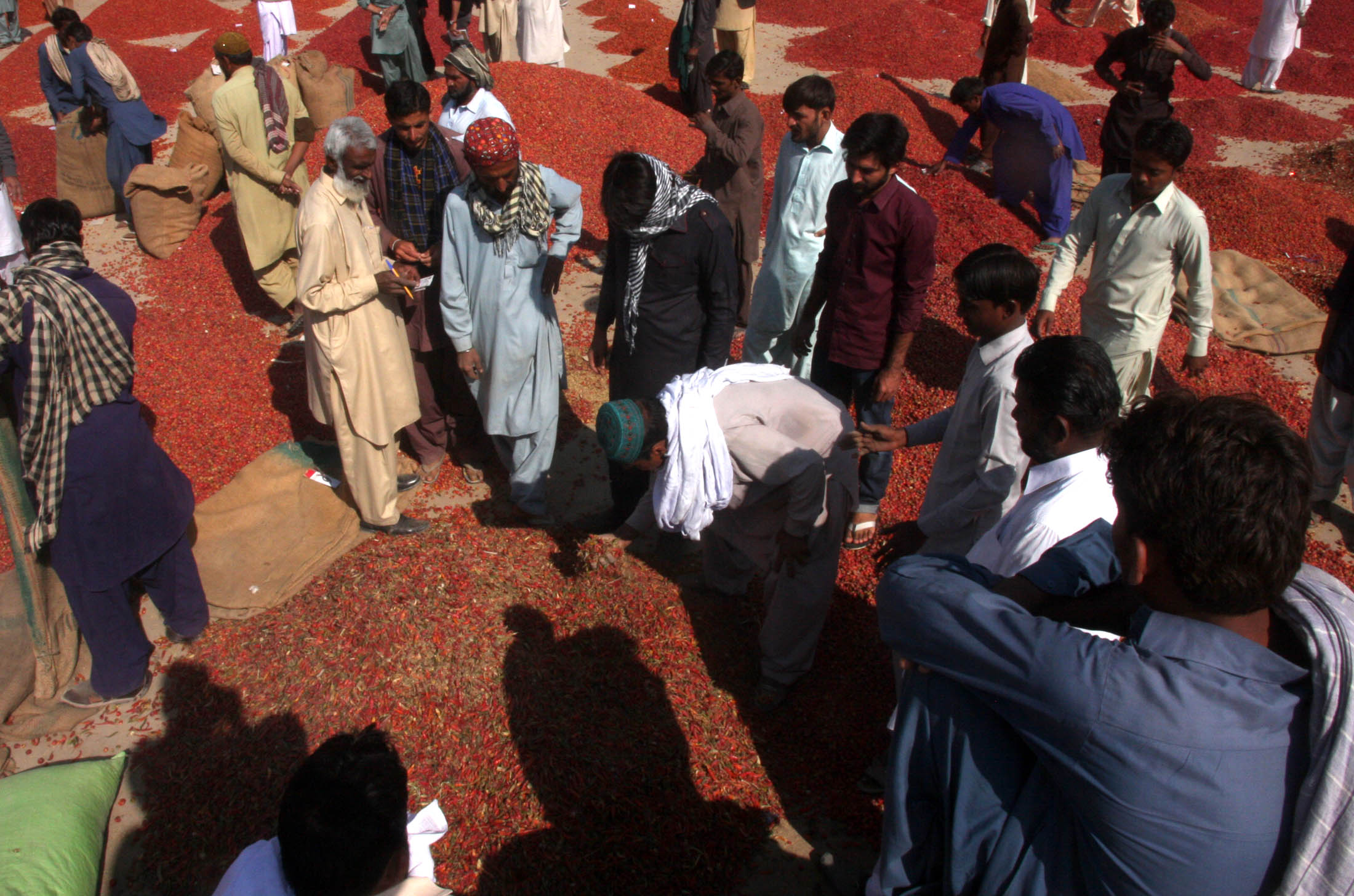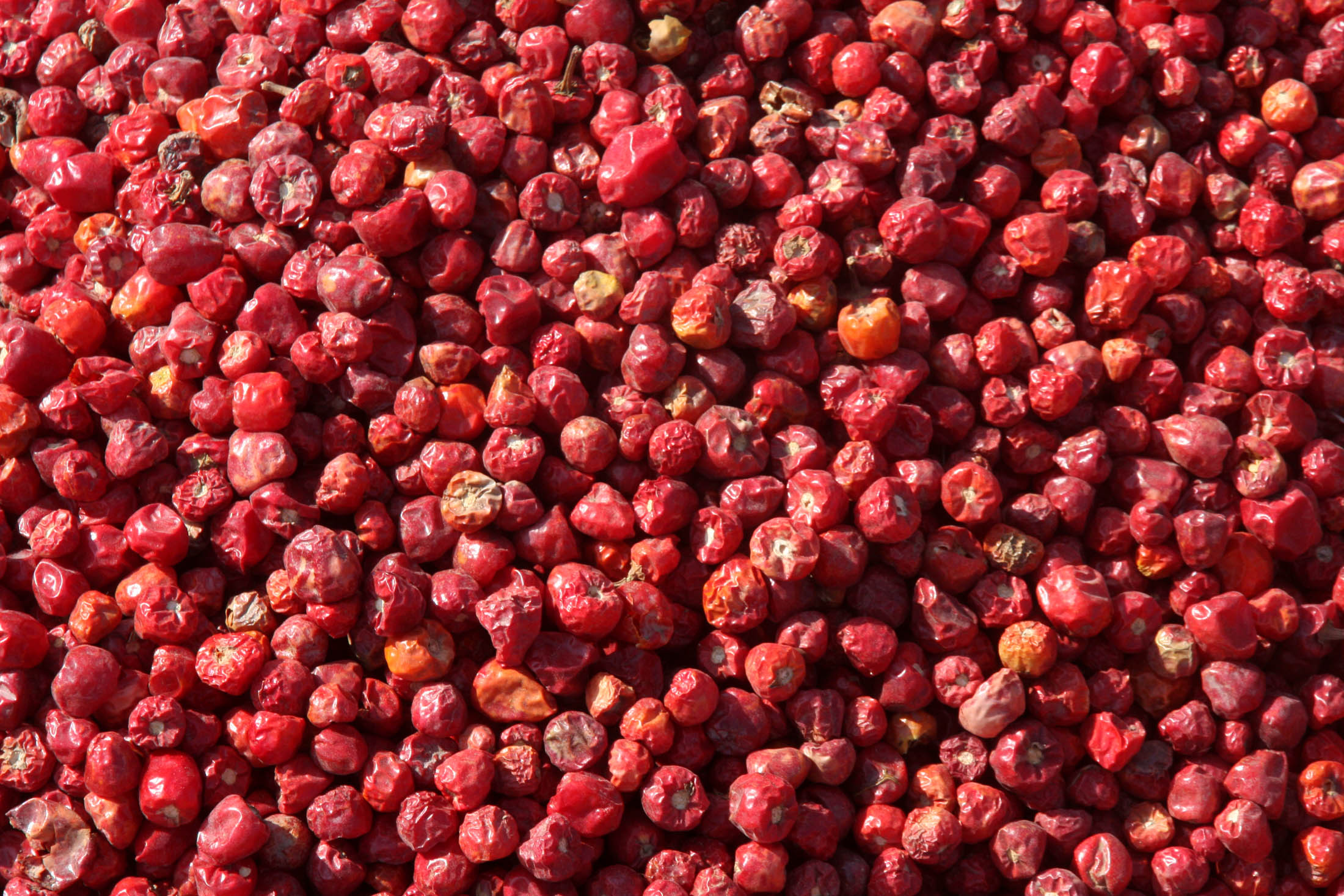Red hot chilli matters
Farmers in hot pursuit of government aid to boost sales of their renowned chilli crop
Photos by Athar Khan
“From Kunri hailed a farmer’s daughter, most cherished among all her sisters. So beautiful, smart and full of life was she that people from distant villages idolised her and young men pursued her. The fragrance she wore gave people a waft of her arrival to the market even before they caught sight of her. Word of her imminent arrival would spread immediately and people would flock to the marketplace just to catch a glimpse of her. But one day, her admirers found her lifeless body; she had been poisoned.”
This tale, however, is about a type of red chilli called longi. The spice originates from Kunri, a town in Sindh’s Umarkot district. Longi is renowned world over for its taste and aroma, but its contamination in the recent past has threatened the spice market and fueled tales of tragedy similar to the one of the farmer’s daughter.
“There was a time when longi was demanded all over the world for its superior quality. The price it would get was sufficient to satisfy everyone from farmers to retailers,” recalls Haji Rasool Bux, who is one of the many middlemen or aartis who purchase the yield from farmers and sell it at the Kunri Mirch Mandi, which is said to be the largest spice market in Asia. During the 80s, when Benazir Bhutto was sworn in as prime minister for the first time, a 40-kilogramme bag of spice would cost around Rs27,000 in the wholesale market, which was the highest recorded rate, says Bux. But the market dropped steadily after the detection of a toxin in the red chillies, adversely impacting its export as well. “Currently the average rate of this spice, depending on quality, varies between Rs5,000 and Rs7,000 in the wholesale market,” shares Bux.
Aflatoxins are a family of toxins produced by certain fungi found on agricultural crops. They produce cancer-causing chemicals which are transferred from the soil to the vegetables. Their detection in longi is high because the chillies are laid out under the sun to dry after being plucked from the plant.
“It is the biggest setback obstructing the promotion of this crop. Despite its high quality, it has lost value in the market for this reason and has been substituted with a hybrid, which is a Chinese-modified version of India’s Rajasthani seed,” says Javed Iqbal Arain, an agriculturist whose roots are in the Punjab region. “I was born and raised here (in Sindh)… A language barrier cannot surpass the identity this land has extended to me,” he says.
Unlike the longi’s button-like shape, its hybrid counterpart is long and thin. According to Arain, crop yields have risen with hybrid seeds, allowing farmers to secure higher profits. “If a farmer cultivates longi on an acre of land, he is likely to earn between Rs100,000 and Rs200,000. In the case of its hybrid counterpart, the revenue soars up, ranging between Rs300,000 and Rs500,000.” It is more profitable for farmers and traders to cultivate the hybrid crop, but it’s not suitable for human consumption, says Arain. “It has the highest intensity of hotness and the poison is found in it too.”
Although farmers have employed new methods to reduce the contamination of crops, for instance drying chillies on perforated sheets to avoid the contact of harvest with the soil, this has resulted in higher production costs for farmers, reveals Arain. Laboratory tests reveal that the percentage of aflatoxins has decreased considerably since the employment of this method, asserts the agriculturist, but adds its presence has to be eliminated entirely to earn the trust of buyers.
“The results will be more promising if chillies are dried on tiled floors but this would be a more expensive method and a regular farmer cannot afford this,” says Arain. “The government should look into this matter and help agriculturists take the crop to the number one spot again.”
Although chillies are available throughout the year, the crop’s peak season is the last quarter of the year. “October, November and December are the months when business stands at its highest. After this period, other crops such as cumin seeds and sunflower seeds take over,” says Abdul Rahim Mughal, press secretary of the Kunri Mirch Mandi.
In search of the best quality longi, traders from across the country flock to the Mirch Mandi in Kunri. At a distance of approximately 300km from Karachi, the mandi is spread across eight acres of land under open sky and has been operational since the early 70s. As far as the eye can see, different varieties of red chillies cover the bare ground.
Engulfed by the pungent smell, sellers sit on chairs next to their piles of produce as buyers carefully manoeuvre their way around the maze of red mounds to survey each yield and pick out the best. Atop each display is a tag bearing the name of the farmer, the only way to distinguish one ‘stall’ from the next.
Barring Fridays, the 24-hour mandi is always abuzz with activities; be it day or night, trucks overflowing with gunny bags line up at the gate for their turn to enter the market. The bidding process starts early in the morning when the market’s secretary proceeds towards each pile and starts murmuring rates rapidly.
“The market’s secretary presides over the bidding. He starts with an amount, depending on the quality of the product, and then bidders (traders) take over,” shares Mughal. “The bid comes either with words or a hand signal,” he adds. And there is such a high demand for chillies that it takes only a minute or two for each pile to be sold off.
Despite the market generating billions of rupees for the government, authorities have done little in return to maintain the site, laments Mughal. “The rain plays havoc with our crops since there is no roof above us nor do we have any other facilities, such as proper stalls. It seems that we have been left to run the operation on our own while we pay the huge taxes imposed on us,” he shares.
Since the market is always congested due to the large volume of business, Mughal says the government had pledged to provide them with an alternative space. “It is a 22-acre land on the outskirts of the town. Construction at the site was initiated in 2007, but it is still not complete. Rumours have it that the contractor has fled and work has come to a standstill.”
